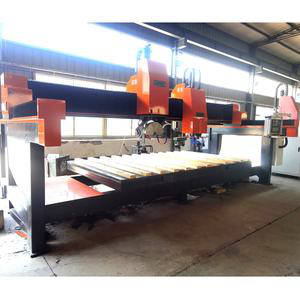The Releated Products of Mobile Stone Cutting
Mobile Stone Cutting
Table of Contents
The Evolution of Mobile Stone Cutting: Efficiency Meets Flexibility
Mobile stone cutting has revolutionized the way we process and shape natural stones. This innovative approach not only enhances productivity but also opens new avenues for artistic expression and precision craftsmanship.
Advantages of Mobile Stone Cutting

The advent of mobile stone cutting technology marks a significant shift from traditional stationary setups. By bringing the tools directly to the work site, this method reduces transportation costs and time significantly. Moreover, it allows for immediate adjustments based on the specific requirements of the project, thereby increasing efficiency and reducing waste. Another key benefit is its ability to handle a wide range of materials, from granite to marble, ensuring versatility in application.

Techniques in Mobile Stone Cutting
Several techniques have emerged within the realm of mobile stone cutting, each tailored to different types of stones and desired outcomes. Waterjet cutting, for instance, uses high-pressure streams of water mixed with abrasive particles to carve intricate designs into stone surfaces. Similarly, diamond wire sawing is particularly effective for cutting through harder materials like granite, offering clean cuts with minimal vibration. These methods, when combined with the mobility aspect, create unparalleled opportunities for customization and detailed workmanship.
Equipment Used in Mobile Stone Cutting

To achieve the precision and flexibility characteristic of mobile stone cutting, specialized equipment is essential. Portable bridge saws, for example, are a staple in this field, providing both accuracy and ease of use. Additionally, handheld hydraulic cutters and electric-powered tools designed specifically for on-site operations contribute greatly to the efficiency and effectiveness of the process. Regular maintenance and upgrading of these tools are crucial for maintaining optimal performance levels.

Sustainability in Mobile Stone Cutting
In an industry often criticized for its environmental impact, mobile stone cutting offers a more sustainable alternative. By minimizing the need for long-distance transport of raw materials, it reduces carbon footprints associated with logistics. Furthermore, advanced cutting techniques can result in less material wastage, contributing positively to resource conservation efforts. Manufacturers are increasingly focusing on developing eco-friendly solutions that further enhance the green credentials of this technology.
Training and Skills for Mobile Stone Cutting
As with any specialized field, proper training and skill development are vital for those involved in mobile stone cutting. Operators must be well-versed in handling various machines safely and efficiently while also possessing a deep understanding of stone properties and cutting techniques. Continuous learning programs and workshops help keep professionals updated on the latest trends and technologies, ensuring they remain at the forefront of this dynamic industry.
Future Prospects of Mobile Stone Cutting

Looking ahead, the future of mobile stone cutting seems promising. Innovations in robotics and artificial intelligence may lead to even more sophisticated systems capable of performing complex tasks with greater autonomy. There’s also potential for integrating augmented reality (AR) tools that could aid in visualizing designs before actual cutting begins, streamlining workflows and enhancing creativity. As the demand for personalized architectural elements grows, so too will the role of mobile stone cutting in meeting these needs effectively and sustainably.
Request for Quotation
报错: 未找到这个表单





